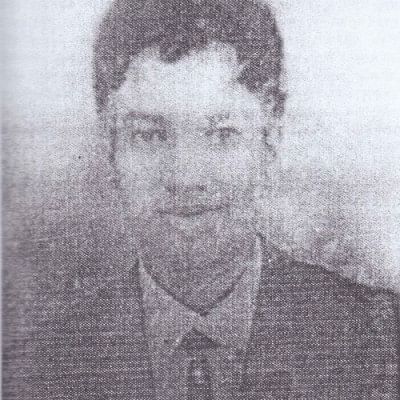The gallantry of a teenage warrior


In 1971, when Salahuddin's life ended, he was only eighteen. But before breathing his last, the young man won hearts of patriots by being a shining example of courage and stoicism in the face of barbaric torture by the occupation forces of Pakistan.
Born in a well-off family at Koshamandalpara village of present-day Pirganj upazila, Salahuddin had always taken part in programmes protesting the fleecing of East Pakistan by the West Pakistan, said Mohammad Akhtaruzzaman, a freedom fighter commander under whom Salahuddin took part in many battles.
After the proclamation of Independence by Bangabandhu, the Pakistan army and their local collaborators unleashed terror on unarmed Bangalees. On April 17 alone, they torched numerous homes and killed over a hundred Pirganj residents, including Principal Golam Mostafa, a famed educationist.
Salahuddin, a second-year student of ISC (Intermediate in Science) at Dinajpur Government College that year, decided to join the Mukti Bahini for liberating the country, freedom fighter Akhtaruzzaman added.
By the end of April, Salahuddin left the country for arms training at Tarangapur camp in Shiliguri of India's West Bengal. Following the training, he along with a number of other trained fighters -- under the leadership of Commander Akhtaruzzaman -- entered Bangladesh territory and continued to cause substantial damage to the occupation forces in different battles in and around Pirganj.
On a fateful night in mid-November, when about a hundred-member troop of the freedom fighters, including Salahuddin, reached Sal forests in Thumnia area, within only three kilometres from his village home, young Salahuddin could not resist the temptation to see his parents.
But his decision to stay at home that night, at his mother's request, was passed on to the Pakistan army by local collaborators and they captured Salahuddin the following morning.
When the army lined up Salahuddin and 15 to 20 other local students -- with their hands tied -- in front of the village mosque, Salahuddin somehow managed to free himself and sprinted off towards a sugarcane field.
Salahuddin's captors fired shots and chased him down. Before taking him to the camp of the then East Pakistan Rifles (EPR) in Thakurgaon, they brutally beat up the teenage boy in front of his parents and the villagers.
Several freedom fighters including Shahidullah Shahid, from Pirganj area, said the Pakistan army in their attempt to glean information about other freedom fighters, drove nails into Salahuddin's fingers, gouged his eyes out and charged bayonet on him.
As Salahuddin remained resolute in his determination to safeguard the identity of his compatriots and uphold the dignity of Bangalees despite all the torture, the Pakistanis decided to teach Bangalees a lesson.
They threw the boy in a cage, inside the camp, where two live Bengal tigers were kept for the amusement the then commander of EPR. As a scare tactic, they allowed locals to witness the cruel death of Salahuddin.
Prof Monotosh Kumar Dey, eminent educationist and researcher on history of Liberation War in Thakurgaon, said about fifty people including Shaheed Salahuddin were thrown in the tiger cage at the Thakurgaon EPR camp, which the Pakistanis used for torturing freedom fighters and supporters of Bangladesh's independence.
Salahuddin's younger brother Abdur Reza Shah regretted that the present generations do not know about supreme sacrifices made by most martyrs including Salahuddin.
Demanding trial of all collaborators such as the Razakars, he also said after witnessing inhumane torture of their eldest son before their very eyes, both his parents sustained severe trauma and they suffered from it till they died in the eighties.
After the Liberation, Thakurgaon EPR camp went under subsequent commands of Bangladesh Rifles (BDR) and Border Guard Bangladesh (BGB). The headquarters of BGB's Thakurgaon Sector are now located there.
Abdul Latif, a senior journalist in Thakurgaon, said according to a news report published in the Daily Ittefaq, Maj Abdus Salam, the then commanding officer of BDR, used the tiger cage as a lockup for smugglers up until 1988. The cage was dismantled in the '90s.
Many locals alleged that although the tiger cage should have been preserved for its historic significance, it was dismantled during the tenure of the BNP-Jamaat government, between 1991 and 1996.
After the Liberation, Salahuddin's relatives and villagers established 'Ekhtiarpur Shaheed Salahuddin Dimukhi High School' at his village home. Pirganj municipality opened Shaheed Salahuddin Road in Pirganj town.
The Daily Star, as part of its initiative to recognise unsung war heroes, honoured Shaheed Salahuddin on July 7, 2013. Professor Emeritus Anisuzzaman and litterateur Selina Hossain handed over a crest, sash and a cheque of Tk 20,000 to the martyr's family.

 For all latest news, follow The Daily Star's Google News channel.
For all latest news, follow The Daily Star's Google News channel. 



Comments